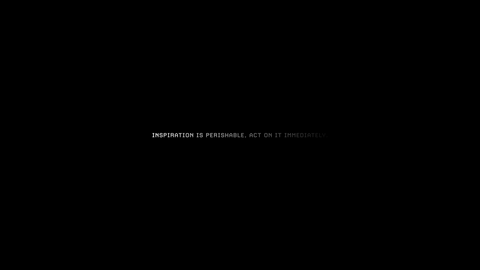Written by Dr David Grew
I first had the idea of creating a visual education platform late one night in 2001 while studying for a pre med molecular biology exam in college. I was in a library staring at a page in a thick book, trying to memorize each intermediate step of an elaborate chemical signaling cascade.
I knew success on the exam would be measured by my ability to regurgitate these facts. But in my mind’s eye, the molecules wanted to bubble out of the page and form 3-dimensional beings in the air above my desk, toggling, turning gears, and demonstrating for me the molecular work that sustains life.
That was the point, after all, right? To understand the directionality of the molecular levers that shift physiology this way and that? If I was to be a doctor, I had to learn how to fly this plane, not memorize the owner’s manual.
Slowly, my idea to create a platform to digitize foundational premedical curricula ebbed, the way big ideas do when you’re 19.
Later, in medical school and now in practice, I can see I was mostly right. The exam was about memorization, and I did not ace it. But also, I affirmed that basic concepts should be mastered first, minutiae after. It’s about first principles.
Now I practice radiation oncology, a field of medicine in which backstage is very technical and physics heavy, but the patient-facing front of house work is deep end humanism in medicine. I love it.
Over time I noticed my patients respond well when I use pen and paper to illustrate the anatomy of their cancer, the treatment and the risks. After a consult I would typically put the paper in the shredder. But as my drawings got better some patients started asking if they could keep the drawing to show their family. A vague intention to begin digitizing my explanations flickered, drawing on the same fantasies from molecular biology in college, but it never took flight.
During the pandemic I revisited the idea more seriously. Sometime in late 2020 I read the words sell your sawdust on Jack’s Twitter feed. Floored. I was turning out a thing of value, my specific knowledge demonstrated right there on a piece of paper, and day after day I slid it in a shredder. Actual sawdust.
I bought an iPad, stylus and microphone and started tinkering. Comical mishaps out of the gate, but I am learning. I took Build Once Sell Twice to learn the business of leveraging digital assets borne from specific knowledge. Now, I am systematically building a library of 1-2 minute videos with simple explanations about cancer and publishing them on the internet.
Simplify and Share. My videos are intentionally light on nuance. They are meant to merely be a foundation on which patients can later create a more elaborate knowledge infrastructure around the details of their own cancer with their doctor’s guidance.
It’s a different way of doctoring.
I call my patients the day before we first meet and offer to send them videos to provide a framework for our discussion the following day. I curate a short list of videos that apply to their specific situation and send them off, preloading the education before we even meet. Patients watch and share videos with their families. Here’s what I’ve noticed:
Patients are less stressed.
I have more time.
Our conversation shifts from rote recitation of anatomy and treatment to bigger questions about how to live with cancer. Patients open up about juggling their diagnosis and treatment while maintaining their pre-cancer responsibilities, like caring for a spouse with Alzheimer’s, or their job at a bank. Where they have options, I customize treatment to suit them.
A person with cancer is still alive for the rest of his or her life.
I prefer to get paid for my judgment, not my time. This imperfect but functional system I created to digitize patient education has shifted the balance of my time at work towards acts of judgment, away from repetitive live lectures of variable quality and execution - we all have off days.
When I digitize my knowledge of cancer and “sell my sawdust” I am actually selling it not for money, but for time for me and peace of mind for my patients.
I’m not foolish enough to think my explanations are the best or only way to teach patients. But I can see that I have created something of highly scalable value. I am not the only physician creator.
Where my predecessors sketched on exam table paper, the next generation of doctors will conduct an orchestra of their own digital assets.
For now my content delivery system is clunky and imperfect. So we founded PRIMR, a startup building a service for ANY physician creator to store and securely distribute their digital educational content directly to patients. If you want to help, my DMs are open.









